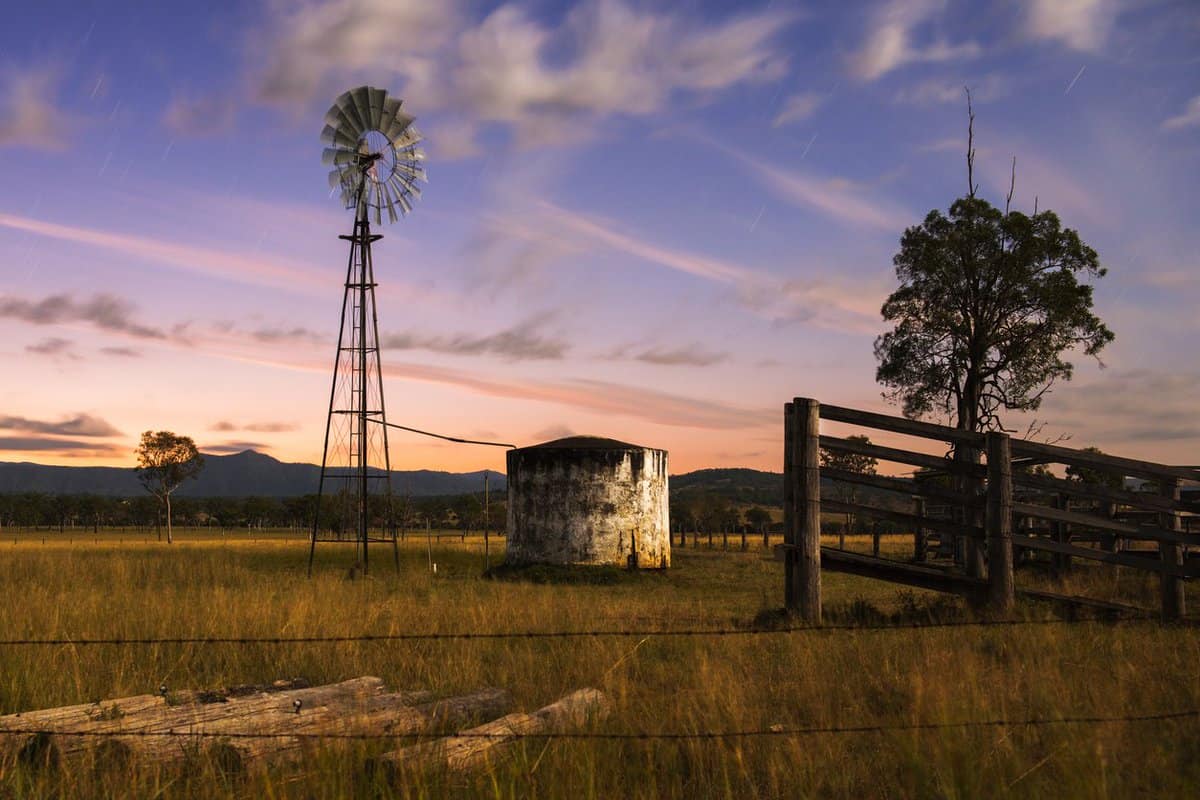The history of wind energy in the US started in the 1890s when windmills were used to capture wind and converted into power for many purposes. This landmark development was followed by the development of the wind turbine which has been further refined to the utility-scale turbines we have nowadays.
A step-by-step history of wind energy in the United States
1890 witnessed the first existence of windmills. These windmills were used to generate wind power which was later converted into electricity to power a few houses. Also, in North America, wind power is used for pumping water and is also exploited by farmers for irrigation.
Enhancing the efficiency of windmills was achieved through the invention of steel blades. Due to this higher efficiency, above 6 million windmills were erected in the United States. The 1890 development was immediately followed by the Chicago world’s fair, where windmills were showcased along with more new designs of wind turbines. Hence, the United States was a leading country in exploiting the potential of wind energy and the latest technology.
The 1940s was known mainly for World War II, which affected the entire globe drastically. As a source of electricity, the US used a large turbine installed on a Vermont Hilltop to powerhouses in 1941. At that time, this turbine was the largest and was generally referred to as the “Grandpa’s Knob.” It has 1.25 megawatts and was able to function as a source for local electricity supply.
In 1974, Saudi Arabia and other leading oil-producing countries placed an embargo on oil supply to the US and other European countries in response to the Yom Kippur War. This occurrence increased the interest in wind energy as the United States was in dire need of an alternative power supply due to high oil consumption.
To enhance interest in wind energy, the President signed the Public Utility Regulatory Policy Act, which demands that companies must buy a certain amount of electricity from renewable energy, including wind energy. Congress subsequently passed the Act.
Another impressive achievement was recorded in 1980 when the largest wind farms were installed. The first wind farm was established in California, and this exposes many things that were not adequately considered before installation. This includes impact on the environment and proper determination of location for the installation of turbines. These facts were put together in the following designs. One of the improvements that followed the facts discovered was the development of a way to predict wind turbine performance. The method discovered was referred to as “The Viterna Method,” The technique was found by two NASA scientists, Bob Corrigan and Larry Viterna. This method helped determine expected results before the installation of wind turbines.
The US government put considerable effort into sustaining the interest in wind energy. For example, in 1992, the enactment of the provision of the Energy Policy Act, which provided for the authorization of a 1.5 cents production tax credit on a kilowatt-hour of wind-power-generated electricity, demonstrated this effort. This provision further increases the interest in wind energy. Following the enactment, the National Wind Technology Center was established and was given the role of improving wind energy supply to provide an alternative to the traditional energy sources.
These developments were maintained until 2008 when the possibility of 20% wind energy by 2030 was reported. Following this, the US Department of Energy in 2011 released the National Offshore Wind Strategy based on $168 million. The department works with the Department of Interior to reduce the amount spent on energy by exploiting technology development and reducing deployment timelines. Subsequently, 3 projects were selected in furtherance of this strategy. This 2011 strategy was deemed successful because the following year, the US recorded the installation of wind turbines with about 60 gigawatts capacity. These turbines were able to supply precisely 15 million homes with electricity.
However, a more remarkable achievement in wind energy history was recorded in 2013 when the first wind turbine connected to the grid was deployed in the United States. The University of Maine achieved this with a $12 million investment from the US Department of Energy. This does not only serve as remarkable progress in the United States, but it also solidifies the US position as a leading figure in innovation and clean energy.
Another wind vision report was released in 2015, and this time, it showed that 35% of wind energy can be generated in the United States by 2050. This report expanded the focus on wind energy and created more job opportunities. By 2016 it was reported that wind turbine technician is the fastest-growing job in the US. In the same 2016, a 30 megawatts offshore wind farm was installed in Rhode Island.
There was consistent progress in the development of wind energy in the United States, and by 2019, there were above 100 gigawatts of wind energy installed in the country.
2021 witnessed the introduction of the private sector into wind energy. This was achieved with the approval of the Vineyard 1 offshore wind project that can power above 400,000 homes and businesses.
Conclusion
Indeed, the development of wind energy remains a work in progress. Though remarkable achievements have been recorded several years back, and more technology and expertise for continual development. There is a lot more to gain and with consistent technology development there is practically no limit to what can be achieved in the coming years.
